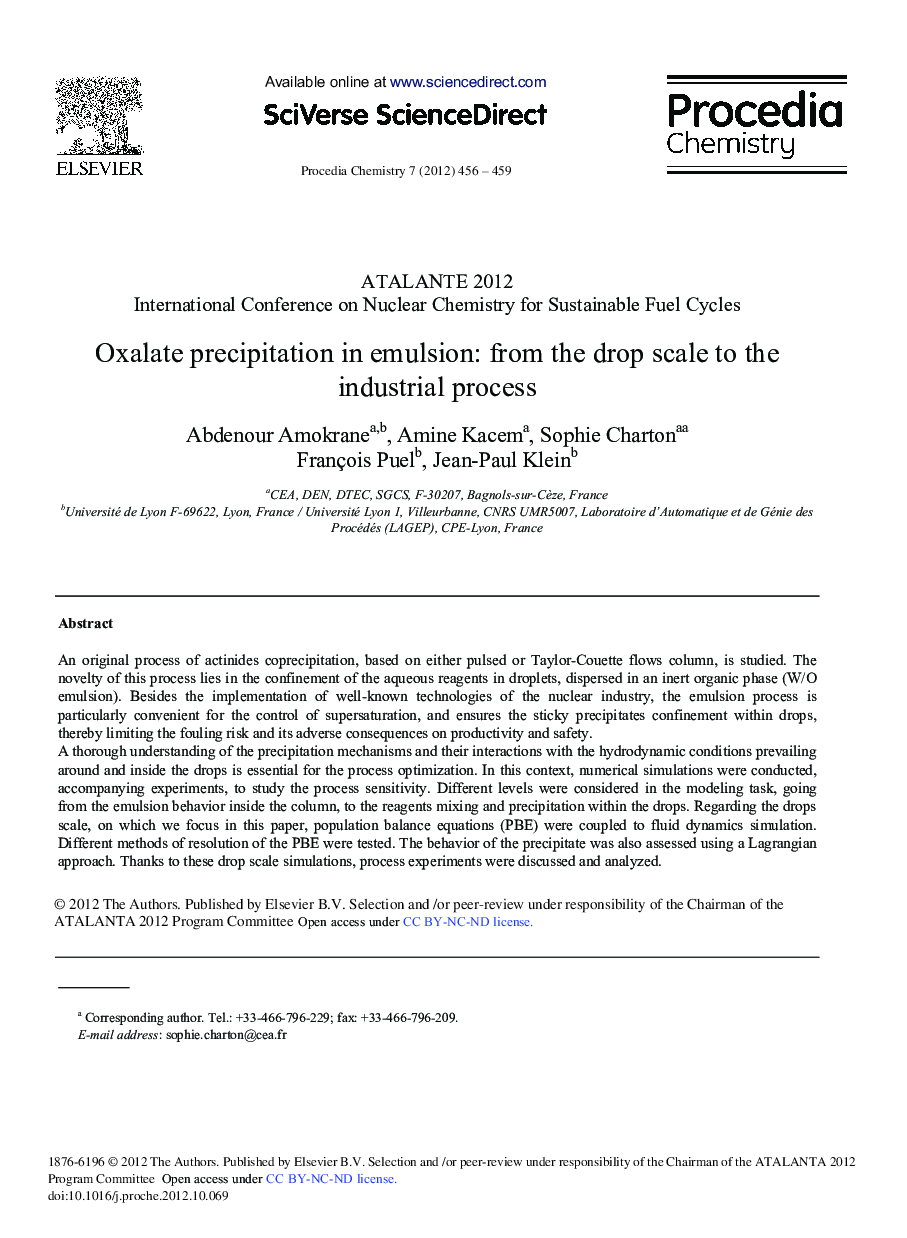| Article ID | Journal | Published Year | Pages | File Type |
|---|---|---|---|---|
| 240150 | Procedia Chemistry | 2012 | 4 Pages |
An original process of actinides coprecipitation, based on either pulsed or Taylor-Couette flows column, is studied. The novelty of this process lies in the confinement of the aqueous reagents in droplets, dispersed in an inert organic phase (W/O emulsion). Besides the implementation of well-known technologies of the nuclear industry, the emulsion process is particularly convenient for the control of supersaturation, and ensures the sticky precipitates confinement within drops, thereby limiting the fouling risk and its adverse consequences on productivity and safety. A thorough understanding of the precipitation mechanisms and their interactions with the hydrodynamic conditions prevailing around and inside the drops is essential for the process optimization. In this context, numerical simulations were conducted, accompanying experiments, to study the process sensitivity. Different levels were considered in the modeling task, going from the emulsion behavior inside the column, to the reagents mixing and precipitation within the drops. Regarding the drops scale, on which we focus in this paper, population balance equations (PBE) were coupled to fluid dynamics simulation. Different methods of resolution of the PBE were tested. The behavior of the precipitate was also assessed using a Lagrangian approach. Thanks to these drop scale simulations, process experiments were discussed and analyzed.
